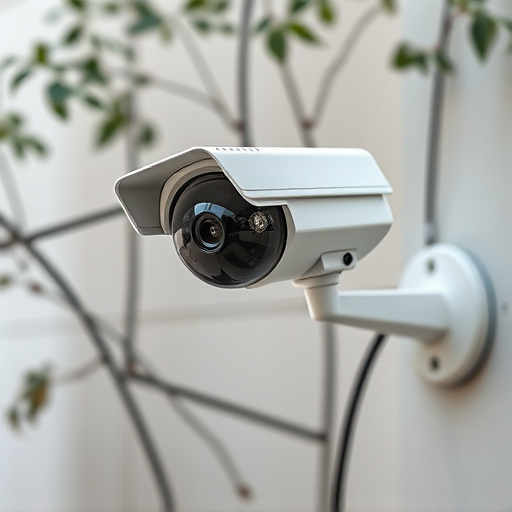Strategic dummy camera placement involves positioning fake security cameras in high-risk areas to deter criminals, leveraging crime patterns and property layout. Key zones include dark corners and entry points, with decoy cameras maintaining visual surveillance without compromising aesthetics. High-traffic areas like entrances and corridors are ideal, divided into tiers based on sensitivity using advanced or simpler models. Mounting heights vary depending on environment, structure, and goals; residential areas use 2-3m (6-10ft) cameras, while commercial settings may require 4-5m (13-16ft). Effective placement balances security needs with visual appeal, covering common entry points and vulnerable areas harmoniously.
In the realm of home security, strategic dummy camera placement is an often-overlooked yet powerful tool. Understanding the art of positioning these decoys can significantly enhance your property’s protection. This guide delves into the key zones for optimal dummy camera installation, emphasizing strategic placement for maximum deterrence. By considering practical factors and balancing security with aesthetics, you can create a layered defense that leaves potential intruders confused and deterred. Uncover the secrets to effective strategic dummy camera placement zones.
- Understanding the Importance of Strategic Placement
- Defining Key Zones for Dummy Camera Installation
- Practical Considerations for Optimal Height
- Security and Aesthetics: Balancing Act in Dummy Camera Mounting
Understanding the Importance of Strategic Placement
The strategic placement of dummy security cameras, or fake cameras, is a crucial element in enhancing actual security measures. Positioning them thoughtfully can deter potential criminals by creating the illusion of enhanced surveillance, even if the cameras are not actively recording. By identifying key areas prone to crime or high-risk zones requiring protection, you can effectively deploy these decoys to maximize their deterrent effect.
Understanding the layout of your property and analyzing crime patterns helps pinpoint optimal locations for strategic dummy camera placement zones. Consider areas with limited visibility, dark corners, or entry points that might be easily accessed without detection. Smartly placed fake cameras in these zones send a powerful message to would-be intruders, acting as a visual reminder that they are under constant watch.
Defining Key Zones for Dummy Camera Installation
When defining key zones for dummy security camera installation, the primary goal is to mimic real surveillance while maintaining an aesthetically pleasing and strategic layout. Identify high-traffic areas as prime spots for dummy cameras, such as entrances, exits, corridors, and common gathering points. These zones offer optimal visibility and can effectively deter potential intruders or misconduct.
Consider dividing these strategic dummy camera placement zones into tiers based on sensitivity and importance. For instance, highly secured areas like offices or secure storage rooms might warrant more advanced dummy cameras positioned at higher heights, while less critical corridors or entryways could do with simpler models mounted at standard human eye levels. This tiered approach ensures a comprehensive security network without unnecessary complexity or cost.
Practical Considerations for Optimal Height
When determining the optimal height for security camera placement, practical considerations come into play. The strategic dummy camera placement zones vary based on factors like environment, building structure, and surveillance goals. For residential properties, positioning cameras at a height of 2-3 meters (6-10 feet) above ground level is often effective, ensuring clear views without invading privacy. In commercial settings, the ideal range could extend to 4-5 meters (13-16 feet), capturing wider areas and deterring potential threats.
Environmental factors such as tree growth, weather conditions, and lighting should be taken into account. Cameras positioned too low might be obstructed by foliage or darkness, while those mounted too high can struggle with wind or snow accumulation. Balancing these variables ensures that the dummy cameras serve their purpose efficiently, providing clear, unobstructed visuals for optimal security.
Security and Aesthetics: Balancing Act in Dummy Camera Mounting
In the realm of security, strategic dummy camera placement is key to maintaining an effective surveillance system while also considering aesthetic appeal. Mounting heights play a crucial role in achieving both goals. Lower strategic zones, such as near ground level or at eye level, are ideal for deterring potential intruders as they offer clear visibility and cover less-secure areas. However, these positions might compromise the visual quality of footage due to shadows or limited angles.
Conversely, higher mounting heights provide clearer, more detailed images but may be less intimidating. Balancing security needs with the desire for an aesthetically pleasing environment requires careful thought. Placement zones should align with common entry points, vulnerable areas, and the overall design aesthetic of a property. By harmonizing functionality and visual appeal, strategic dummy camera placement enhances both security measures and the look of a space.
Strategic dummy camera placement is key to enhancing security without compromising aesthetics. By defining specific zones for installation, considering practical factors like height and angle, and balancing security needs with visual harmony, you can create an effective surveillance system that doesn’t look out of place. Remember, the right placement of these fake cameras can deter crime and provide peace of mind, making them a valuable addition to any property’s security strategy.
